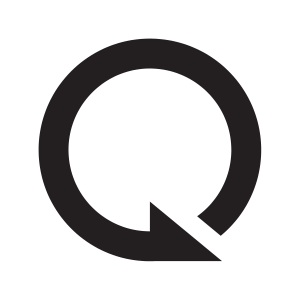Born in the city of Indore, Parth Jain has been a studious child from his school days. He did his Graduation in B.com in 2015 from Devi Ahilya Vishwavidyalaya, which is in Indore Itself. After his graduation, he completed CA in 2016.
While working full time with Global tax team in Nomura, he cleared CFA Level – I in 2018
Let’s deep dive into his background story and preparation strategy which helped him clear the CFA exam in first attempt. Given below are the excerpts from our interview with Parth:

Why did you decide to pursue CFA?
As a Chartered Accountant, I always had a strong interest in finance and investments. However, I felt limited in my career opportunities as a CA (Most of the Job profiles were into Audit or Taxation!) and I desired a career that would allow me to delve deeper into the world of finance.
I began researching various finance certifications and quickly came across the CFA Program.
I was impressed by the program’s rigorous curriculum and the fact that it was globally recognized. The CFA charterholders were also highly regarded in the finance industry, and I knew that obtaining the designation would open up many career doors for me.
What steps did you take to further your CFA preparation?
I was initially hesitant about pursuing the CFA Program due to its reputation for being extremely challenging. However, I was determined to expand my skillset and advance my career, and thus decided to take on the challenge.
As the first step, I knew that I needed to find the right coaching institute to help me prepare for the exam. I started researching different institutes and reading reviews online to determine which one would be the best fit for me.
After careful consideration, I decided to join Quintedge for my CFA exam preparation.
Also Read: How To Prepare for CFA Level 1 [A 90 Percentiler’s Guide]
How did Quintedge help you?
Once I started my classes at Quintedge, I quickly realized that preparing for the CFA exam would be a much more intensive process than I had anticipated. The curriculum was vast, and I needed to be disciplined and focused to ensure that I covered everything in time.
To keep myself on track, I was given a detailed study plan that outlined what topics I would cover each week and how much time I would devote to each. Then they guided me as to which topics to focus more, given my current knowledge
I made sure to leave ample time for practice questions and mock exams after the batch was over, as I knew that practice was key to performing well on the actual exam.
In addition to attending classes, I also took advantage of Quintedge’s online resources. They had an extensive library of practice questions and mock exams that I could access from home. This helped me to reinforce my understanding of the concepts and to identify areas where I needed to improve.
Their lectures are full of real life examples which helped me to grasp the concepts easily. And I must say, he left no stone unturned in re-explaining the concepts if any student had doubts.
Can you share your preparation strategy for CFA Level – I?
I prepared for the exam in three phases, just as Mr Yash had advised me. Let me brief them out –
First phase: In the first phase, I focused on learning the tools required for the exam. I started with quantitative methods and learned about time value of money and how to use a calculator.
Then I moved on to financial reporting and analysis, and for that, I found LM 3-5 to be a valuable resource. I studied the interactions between the balance sheet, income statement, and cash flow statement, with a focus on specific asset and liability categories influenced by accounting policies and estimates. It also covered topics such as inventory costing, depreciation, intangible assets, deferred taxes, leasing, and accounting for bonds.
Next, I studied the Corporate Issuers section which focuses on capital structure, cost of capital, and measures of leverage, which are crucial components of this study. In the Economics section, I divided my study into three main areas. The first area covered fundamental concepts such as supply and demand, fixed and variable costs, and macroeconomic concepts such as aggregate demand, supply, and output, economic growth, and fiscal and monetary policies. The second area discussed the movement of goods, services, and financial capital between countries, currency market fundamentals, and geopolitics.
Second Phase: In the second phase, I moved on to study assets classes. I started with fixed income, then moved on to equity. Before studying the analysis, valuation, and characteristics of equity securities, I studied LM 4-6, which was beneficial in quickly valuing equity as it required a clear understanding of equity securities. I also studied alternative investments, which despite being a small reading, covered important topics such as real estate and private equity. I didn’t overlook this section as it carried a high weight in the exam. Finally, I studied derivatives which laid the groundwork for comprehending basic derivative securities, including forwards, futures, options, and swaps.
Third Phase: In the third and final phase, I focused on portfolio management which emphasized the significance of portfolio planning and construction. It introduced diversification and applied statistical concepts like standard deviation in the context of portfolio management. I also studied the Ethics section early on and focused on it in the final month as it was crucial and challenging. I reviewed the rules and regulations and applied them in practical situations using scenario-based questions. I also practiced applying the rules to hypothetical scenarios.
Overall, following this three-phase strategy helped me to prepare thoroughly for the exam and feel confident on the day of the test.
Final Verdict –
The strategy helped me to get into exam with confidence and I scored 90+ percentile in 8 subjects.


